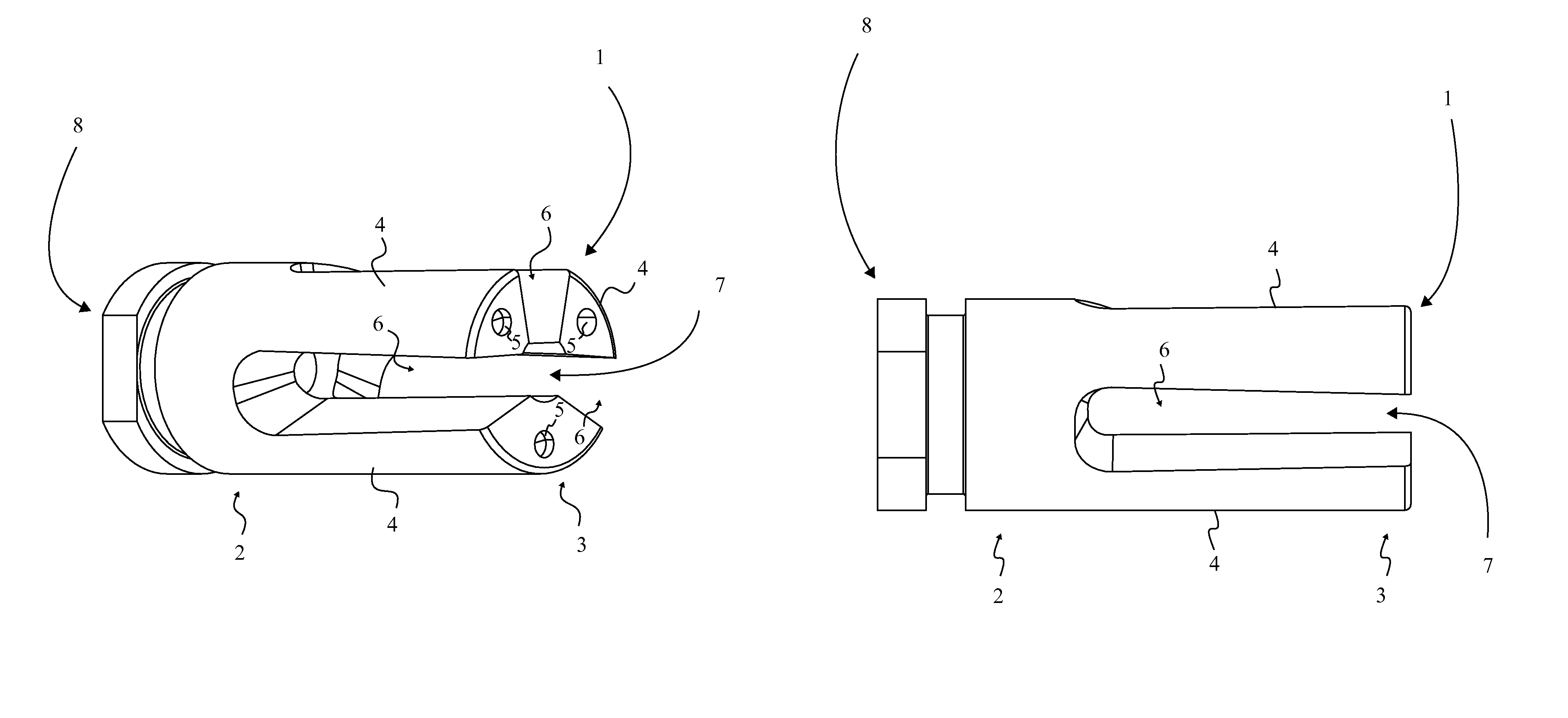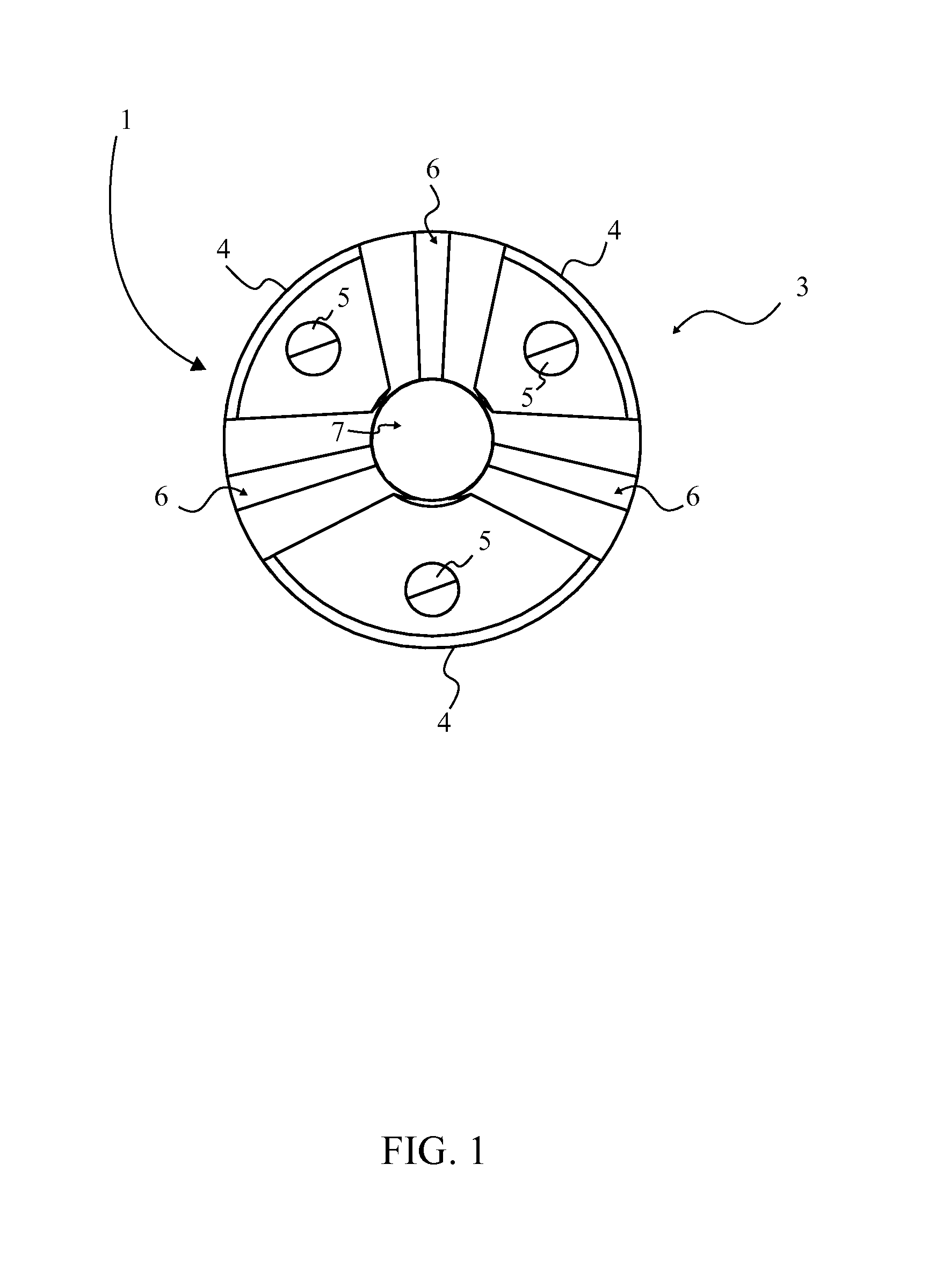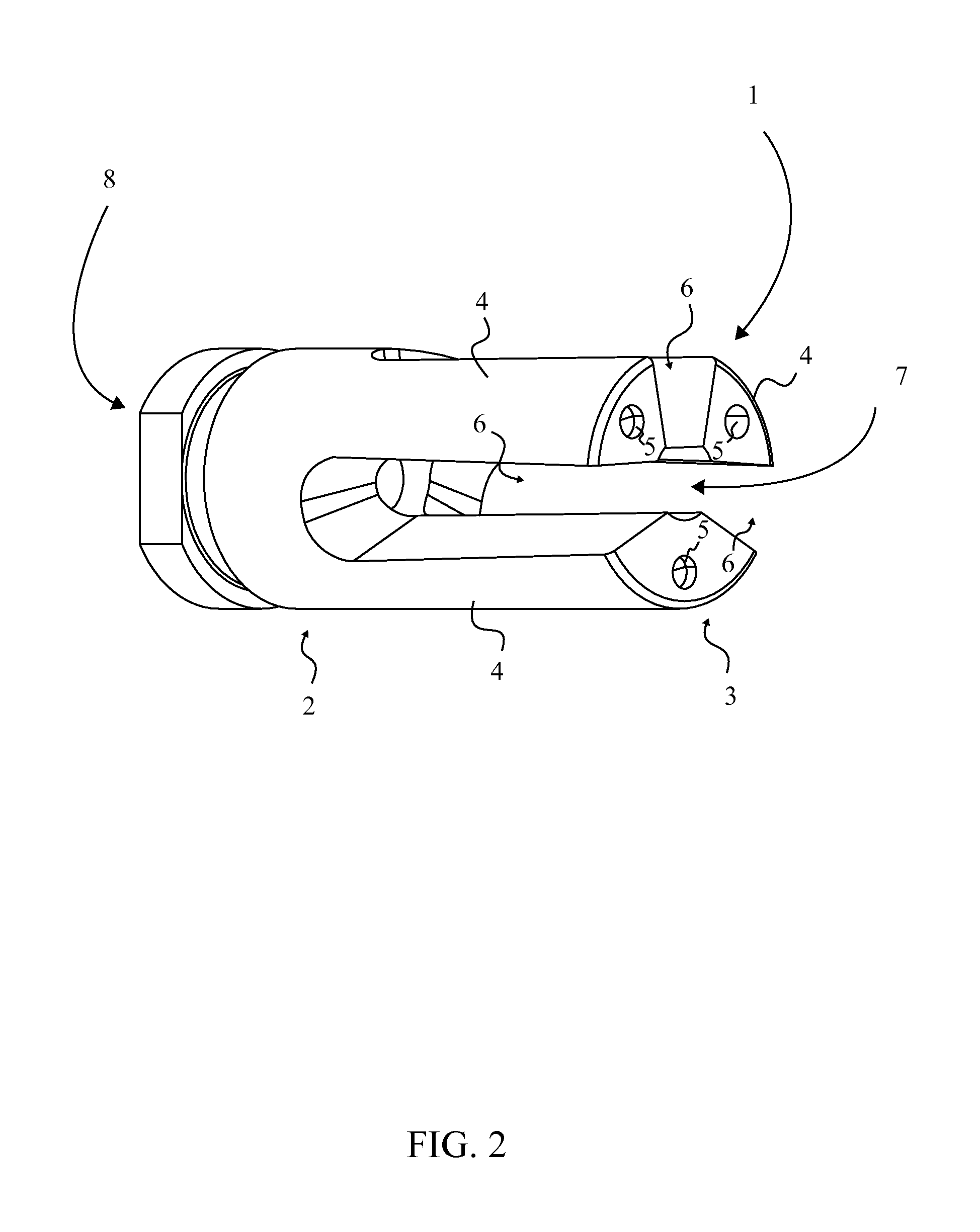Flash suppressing and recoil compensating muzzle device
a recoil compensating and flash suppressing technology, applied in the field of muzzle devices, can solve the problems of undesirable side effects, light emission and recoil, adversely affecting the speed and accuracy of subsequent discharges of firearms,
- Summary
- Abstract
- Description
- Claims
- Application Information
AI Technical Summary
Benefits of technology
Problems solved by technology
Method used
Image
Examples
Embodiment Construction
[0014]All illustrations of the drawings are for the purpose of describing selected versions of the present invention and are not intended to limit the scope of the present invention.
[0015]Referencing FIG. 1 and FIG. 2, the present invention is a combination muzzle device that is found at the terminal end of a firearm's barrel in order to mitigate recoil and reduce muzzle flash after discharging the firearm. The present invention accomplishes this while preventing audible ringing due to harmonic resonance. The combination muzzle device comprises a cylindrical open ended structure 1, a bore 7, and a terminal end mount 8. The cylindrical open ended structure 1 allows the escape of propellant gases in a fan pattern that substantially decreases light emissions and dampens recoil upon discharge of the firearm. The terminal end mount 8 is coupled to the terminal end of a firearm's barrel. The terminal end mount 8 is found positioned concentrically with the cylindrical open ended structure ...
PUM
 Login to View More
Login to View More Abstract
Description
Claims
Application Information
 Login to View More
Login to View More - R&D
- Intellectual Property
- Life Sciences
- Materials
- Tech Scout
- Unparalleled Data Quality
- Higher Quality Content
- 60% Fewer Hallucinations
Browse by: Latest US Patents, China's latest patents, Technical Efficacy Thesaurus, Application Domain, Technology Topic, Popular Technical Reports.
© 2025 PatSnap. All rights reserved.Legal|Privacy policy|Modern Slavery Act Transparency Statement|Sitemap|About US| Contact US: help@patsnap.com



